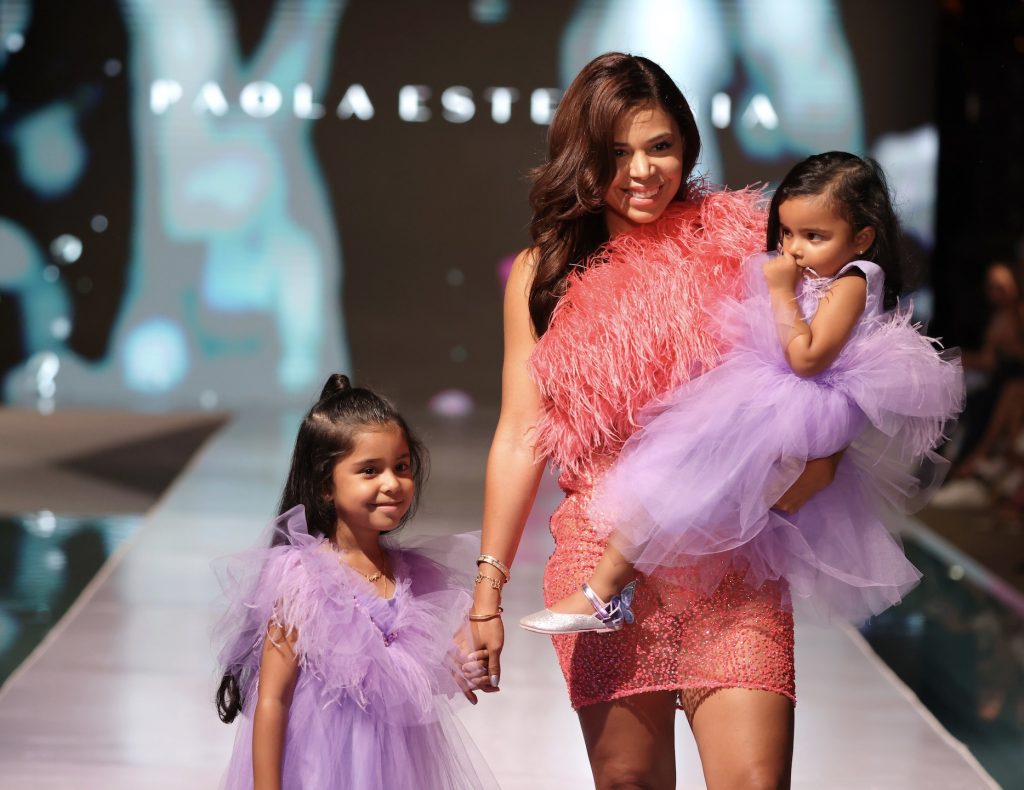
WHO | Paola Estefania
Killing it earlier this month at Miami Swim Week, The Shows, designer Paola Estefania has been soaking in the love by Media outlets around the globe.
In her show, the designer included glittery swimsuits, with waist-high side cuts, goddess-inspired chiffons, and billowy cover ups made to take the Daring Girl from day to night. In her Bio, Estefania says she caters to the needs and desires of the modern “International Woman” – one who enjoys distinctive and luxurious garments – and that fashion philosophy was made clear in Miami, South Beach.
Moving from Venezuela to Florida when she was a little girl, Paola launched her fashion career as an entrepreneur; founding Humble Hustler – A Los Angeles based streetwear brand. The Paola Estefania label is haute couture design (for those “International” women we mentioned) and is rooted in bold, sophisticated, feminine style.
If we understand correctly, Paola’s presence at Miami Swim Week, The Shows, marked her 5th year as a fashion designer. Her intention was to “transform and elevate beach wear”, utilizing a balance of “feminism, sensuality, elegance, and grace.”
Without question, we have to say, Mission Accomplished!
And, congratulations, on such a stunning runway presentation!
WHAT | Digital Labeling
The Secondary Materials and Recycled Textiles Association (SMART) joins 130 recycling, fashion, and footwear organizations around the globe in demanding legislative entities modernize textile labeling requirements. The move would advance sustainability, circularity, and authenticity solutions in the fashion and textile recycling industries. #CutTheTape benefits consumers by providing more product information using digital means.
THE PROBLEM: Each year, the annual production of label tape produces approximately 5.7 million miles (about 9.2m km) of tape; long enough to stretch from earth to moon and back 12 times. With current labeling requirements having not been updated since the 1960s, they are inconsistent and hinder efforts to trace the origins of materials to be more sustainable and support a circular economy.
THE SOLUTION: Digital technology solutions – such as QR code labels – would reduce labeling waste and eliminate at least 343,000 MT of emissions from industry supply chains, while providing consumers with more detailed and accurate product information. The data would also aid in the garment’s lifecycle, by providing details about resale, repair, rental, upcycling, or recycling.
ACTION NEEDED: SMART urges government regulators to amend international, national, and local regulations to allow fully digital labeling solutions to be adopted. QR codes would make products more useful and valuable for longer periods in the circular economy, while unlocking new opportunities for resale, repair, rental, upcycling, or recycling.
SMART President, Steve Rees explained, “Greener e-labeling clears the way for transparency and accountability in the global textile recycling space. QR codes will empower consumers by providing more accessible information and key data that can strategically extend a garment’s or item’s lifecycle as it moves through the resilient reuse and recycle distribution chain.”
SMART calls on legislative leaders to take immediate action to create stringent digital labeling guidelines, which will lead to more responsible outcomes, helping the world economy and the environment.

“We chose to partner with Tide Ocean SA because of their strong commitment to preserving our oceans and protecting our environment,” states Bobbie Weichselbaum, CEO of E. Gluck Corporation. ” Through the launch of our Ocean Plastic Collection, we aim to broaden awareness of plastic waste pollution and to champion the adoption of a circular economy.”
Armitron®, since 1975, has been known for making innovative and fashion-forward watches with quality materials and a coveted affordability factor.






